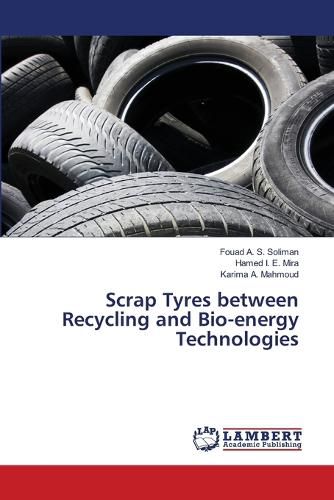Readings Newsletter
Become a Readings Member to make your shopping experience even easier.
Sign in or sign up for free!
You’re not far away from qualifying for FREE standard shipping within Australia
You’ve qualified for FREE standard shipping within Australia
The cart is loading…






This title is printed to order. This book may have been self-published. If so, we cannot guarantee the quality of the content. In the main most books will have gone through the editing process however some may not. We therefore suggest that you be aware of this before ordering this book. If in doubt check either the author or publisher’s details as we are unable to accept any returns unless they are faulty. Please contact us if you have any questions.
Scrap tyres are a category of waste whose disposal might be problematic due to their highly complex structure, diverse composition of the raw material, and quality of the rubber. Rubber represents the 70-80% of the tyre mass, while the rest is made of steel belts and textile overlays, which during recycling have to be separated from the rubber. Tyre recycling is based on the mechanical, thermal or chemical removal of the rubber fraction. Landfilling of waste tyres was widely adopted in the past and it is still practiced in some countries. Waste tyres may create problems because they are flexible and cannot be compacted.The most noticeable problem asso- ciated with large tyre storage areas is the potential fire hazard they present. Once a tyre pile catches fire, it is very hard, if not impossible, to extinguish. In some instances, tyre piles have been burning for several months with the black fumes being visible for many miles.
$9.00 standard shipping within Australia
FREE standard shipping within Australia for orders over $100.00
Express & International shipping calculated at checkout
Stock availability can be subject to change without notice. We recommend calling the shop or contacting our online team to check availability of low stock items. Please see our Shopping Online page for more details.
This title is printed to order. This book may have been self-published. If so, we cannot guarantee the quality of the content. In the main most books will have gone through the editing process however some may not. We therefore suggest that you be aware of this before ordering this book. If in doubt check either the author or publisher’s details as we are unable to accept any returns unless they are faulty. Please contact us if you have any questions.
Scrap tyres are a category of waste whose disposal might be problematic due to their highly complex structure, diverse composition of the raw material, and quality of the rubber. Rubber represents the 70-80% of the tyre mass, while the rest is made of steel belts and textile overlays, which during recycling have to be separated from the rubber. Tyre recycling is based on the mechanical, thermal or chemical removal of the rubber fraction. Landfilling of waste tyres was widely adopted in the past and it is still practiced in some countries. Waste tyres may create problems because they are flexible and cannot be compacted.The most noticeable problem asso- ciated with large tyre storage areas is the potential fire hazard they present. Once a tyre pile catches fire, it is very hard, if not impossible, to extinguish. In some instances, tyre piles have been burning for several months with the black fumes being visible for many miles.